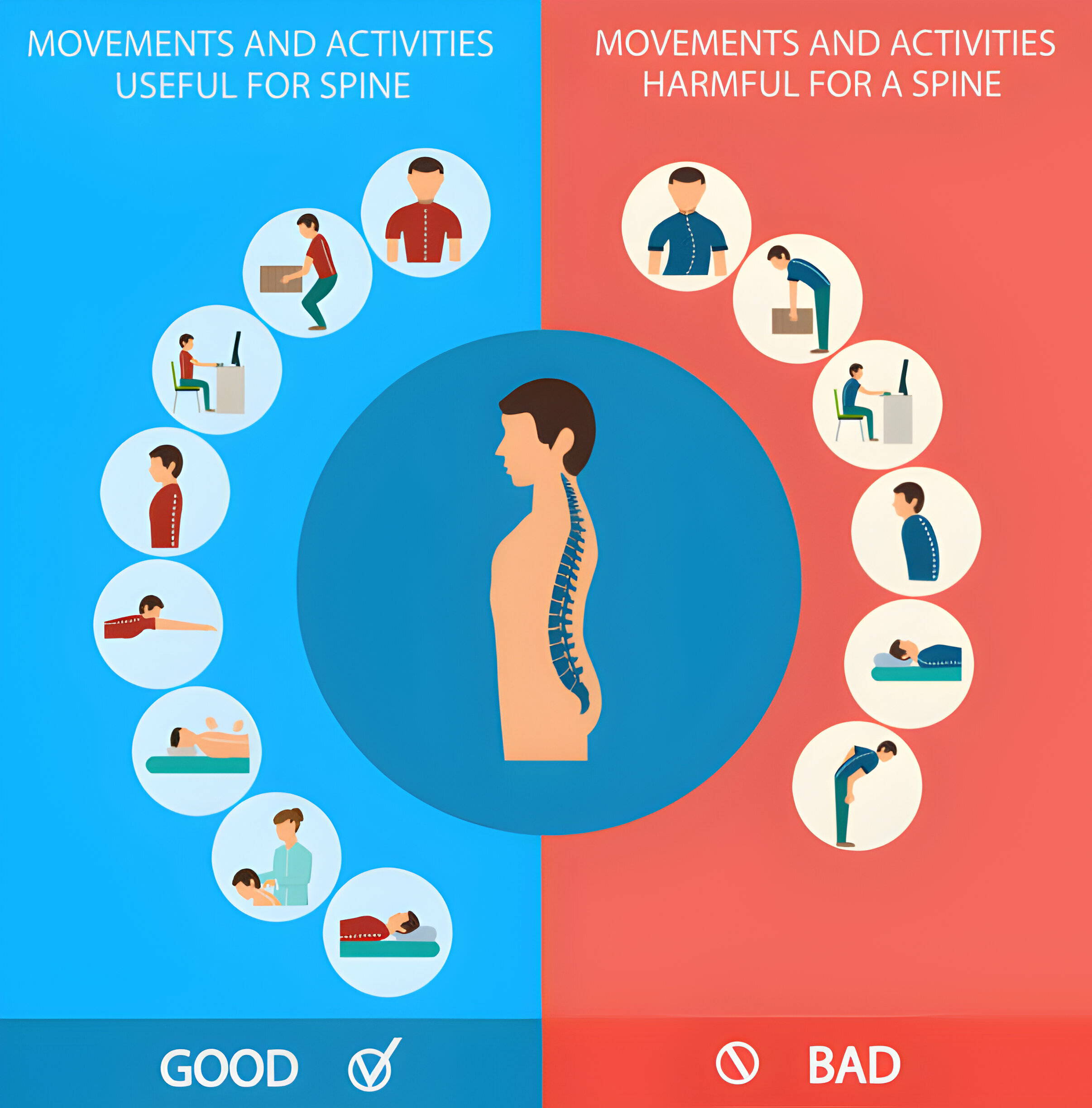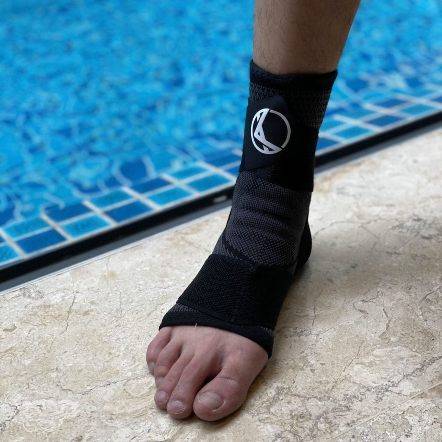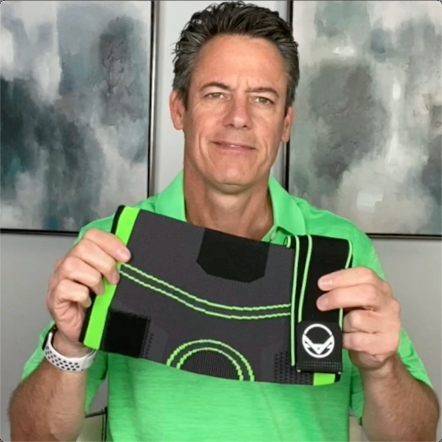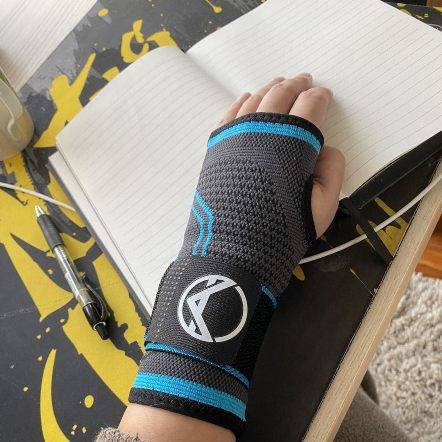
February 26, 2024 | 3 Mins Read
TABLE OF CONTENTS
Are you grappling with an annoying burning sensation in your lower back and wondering how to put out the "fire"? Our comprehensive guide provides actionable steps to identify the underlying causes and offers a range of treatment options to get you back to feeling your best.
If you've experienced a sudden onset of pain in your lower back that feels like a searing, tingling heat, you've likely encountered what medical professionals refer to as "burning back pain." Unlike dull aches or generalized discomfort, burning back pain is often indicative of a specific underlying issue that may involve nerve irritation or compression.
The sensation can be localized to a specific area or might radiate to other parts of your body like your hips or legs, particularly if the sciatic nerve is involved. Burning back pain can manifest suddenly or develop gradually over time. It might occur after specific activities, like lifting heavy objects, or might appear seemingly out of nowhere.
The "burning" descriptor is significant because it often points to a neural issue, possibly involving nerve fibers, nerve roots, or even broader central nervous system dysfunction. These neural pathways are responsible for transmitting pain signals, and when they are irritated or compressed, as may occur with a herniated disc or spinal stenosis, the pain can manifest as a burning sensation.
For instance, imagine you've spent the weekend moving furniture and come Monday, you wake up with an uncomfortable burning sensation localized in your lower back. The discomfort amplifies when you try to bend to tie your shoes. In this scenario, the physical stress of lifting heavy objects may have exacerbated an underlying issue, potentially causing a muscle strain or even herniating a disc, thereby leading to the symptoms you're experiencing.
Mild: A slight discomfort that's more annoying than debilitating. This could result from minor muscle strains, poor posture, or fatigue. Regular stretching and maintaining good posture can often address the issue.
Medium: A pronounced pain that can disrupt daily activities but isn't unbearable. Causes might include muscle spasms, minor disc issues, or prolonged poor posture. It's advisable to consult a healthcare professional for guidance and potential physical therapy.
Severe: Intense pain that can be debilitating and significantly affects quality of life. Severe pain can indicate serious conditions like herniated discs, significant nerve compression, or other spinal issues. Immediate medical attention is recommended.
Hours: Short-term pain that often follows a specific activity or injury. Causes could include minor muscle strain or overexertion. Rest, ice, and over-the-counter pain relief can be effective.
Days: Pain persisting for several days might result from more significant muscle strain, minor disc problems, or an aggravated nerve. If pain doesn't lessen after self-care, seek medical advice.
Months: Chronic pain spanning months can be indicative of ongoing issues like disc degeneration, chronic muscle problems, or nerve compression. Professional medical intervention, including physical therapy or stronger medications, may be necessary.
Years: Pain that lasts years requires comprehensive medical evaluation. It suggests long-term issues like advanced disc degeneration, spinal stenosis, or chronic muscle imbalances. A tailored, multidisciplinary approach to treatment is essential.
The lower back, or lumbar region, plays an essential role in supporting the upper body. When a burning sensation emerges in this area, it's a sign of possible health concerns. Identifying the specific causes can guide effective treatment measures.
Our spinal canal houses the spinal cord. Factors such as age and repeated strain, perhaps from jobs requiring constant bending, can cause this canal to narrow. This narrowing compresses the spinal cord or nerves, leading to inflammation. As these nerves get squeezed, the result is often a burning sensation radiating in the lower back region.
MS is where the immune system wrongly targets nerve coverings. This assault disrupts signals between the brain and body. If nerves in the lower back face this damage, it results in a burning sensation. MS symptoms can be triggered by various factors, including fatigue or even temperature changes.
The spine's structure might deviate due to birth conditions or accidents like a fall. These deviations exert uneven pressure on the vertebrae and surrounding tissues. This constant strain irritates nerves, causing a burning sensation in the lower back.
Suddenly, muscles might contract or spasm. Overexerting during activities, like a heavy workout without sufficient warm-up, or even dehydration, can lead to these spasms. When they occur in the back, they might compress surrounding nerves, causing a familiar burning pain.
This large nerve stretches from the lower back down to the legs. Routine actions, like sitting for prolonged periods or even wearing high heels often, can compress or irritate this nerve. When this happens, a sharp burning pain, commonly known as sciatica, emanates from the lower back and travels downwards.
Prolonged inactivity, perhaps from desk jobs or binge-watching TV shows, weakens the back muscles. Without adequate strength, these muscles fail to provide necessary spine support. This lack of support and the resulting strain often trigger the burning sensations in the lower back.
Continuous mental strain makes our muscles, especially in the back, remain tensed. This constant tension, perhaps from ongoing work deadlines or family challenges, over time, irritates the nerves in the vicinity. The outcome? A nagging burning pain in the lumbar region.
Apart from the burning sensation, other signs accompany different conditions responsible for back pain. Therefore, it's essential to keep track of additional symptoms that can help you identify the underlying cause.
Some people experience muscle spasms or stiffness in the lower back. Others may have trouble walking or standing upright due to severe pain. A lack of mobility and numbness in
One of the most telling symptoms is a continuous sensation of warmth in the back. It feels like a heat pad placed against the skin, but there's no external source of this heat. This persistent warmth might be unsettling, and it often indicates inflammation or irritation in the affected area. It's crucial to monitor this symptom, especially if it remains consistent over time.
Numbness refers to a lack of sensation or feeling in a particular area. When people experience numbness in the lower back, they often describe it as an area "falling asleep." It may feel like a zone where touch and temperature sensations are dulled or completely absent. This symptom usually indicates a nerve compression or damage in the lower spine. Nerve interruptions can lead to this loss of sensation, signaling a potential underlying condition that needs attention.
Often described as a "tingling" sensation, this symptom feels like many tiny pinpricks against the skin. It's not just a passing feeling; it lingers, often indicating nerve disruption or compression. When the nerves in the lower back face pressure or damage, they send erratic signals, resulting in this prickling sensation, making it vital to not dismiss this symptom.
Some activities might amplify the pain. Bending over to tie a shoe, lifting a grocery bag, or even turning quickly can lead to a sharp increase in discomfort. This intensified pain with movement often signals conditions like herniated discs or muscle spasms. It indicates that certain postures or actions are putting additional strain on an already affected area in the lower back.

The discomfort is not just limited to the back, it starts in the lower back and shoots down to the legs or buttocks. This radiating sensation is typically a sign of sciatic nerve irritation. The nerve, when compressed or inflamed, sends pain signals that follow its path. Anyone experiencing this traveling pain should take it as a clear sign that immediate attention is necessary.
Treating burning sensations in the lower back requires identifying their underlying cause. To accomplish this, medical professionals perform several exams and tests, such as:
Your doctor will start by analyzing your medical history and performing a physical exam. During this process, they will ask a series of questions about your symptoms, any past injuries or chronic conditions such as:
Your responses pave the way, guiding the physician to recommend suitable diagnostic tests.
Treatment options for burning sensations in the lower back depend on their underlying cause. Possible treatments include:
Specific exercises can strengthen your back and abdominal muscles, relieve pressure on spinal nerves, and improve your posture, reducing symptoms.
These are over-the-counter pills like ibuprofen that can help reduce swelling and pain in your back. They're good for quick relief but remember, they're not fixing the problem, just masking the pain. Always check with a doctor for the right medication and dosage for you.
For really bad or ongoing pain, you might get a steroid shot directly into the area around your spine that's hurting. This is a more potent way to reduce swelling and can offer longer-lasting relief than pills. But these shots should be a last resort and are usually recommended only after other treatments haven't worked.
Topical analgesics, available both over-the-counter and by prescription, can be applied directly to the affected area. These creams often contain ingredients like menthol or capsaicin that provide a soothing sensation and temporary pain relief.
In more serious cases like a herniated disc or a narrowing of the space around your spinal cord (spinal stenosis), you might need surgery. This is usually the last option when other treatments fail. The goal is to relieve the pressure on the nerves in your back, which should reduce your pain.
Ignoring a burning sensation in your lower back could worsen the underlying condition. For instance, if a herniated disc compresses nerves and goes untreated, it might lead to permanent nerve damage. The resulting pain could be chronic, leading to mobility restrictions or even paralysis.
Chronic pain is not just an extended bout of acute pain. Over time, persistent pain can severely curtail one's ability to move freely. The muscles might stiffen or weaken, and the joints might become less flexible. As the back is central to many movements, compromised function can lead to a decreased range of motion. This limited mobility often restricts individuals from engaging in daily activities, exercise, and even basic tasks, making independence challenging.
Burning back pain can instinctively lead one to adopt altered postures to mitigate the discomfort. Over time, these unnatural postures can become habitual, leading to further musculoskeletal problems. For instance, a person might slouch or lean to one side consistently. This can result in an uneven distribution of weight and stress on the spine, leading to conditions like scoliosis or kyphosis. Moreover, other parts of the body, like the neck, hips, or knees, might compensate for the back's pain, potentially leading to issues in these areas as well.
A good night's sleep is pivotal for overall health, but burning back pain can be a formidable adversary to restful slumber. Pain might make finding a comfortable sleeping position elusive. Frequent awakenings due to spikes in pain can fragment sleep, leading to a pattern of insomnia. Over time, sleep deprivation can contribute to a host of other health problems, including weakened immunity, memory issues, and even heart disease.
It's not just the physical ramifications of burning back pain that are concerning. Persistent pain often casts a long shadow on mental health. The constant discomfort, combined with the inability to partake in previously enjoyed activities or a diminished quality of life, can breed feelings of hopelessness, sadness, or anxiety. Furthermore, the chronic nature of the pain, the uncertainty of recovery, and potential reliance on medications can exacerbate feelings of depression or anxiety, creating a feedback loop where mental distress amplifies the perception of physical pain.

Applying cold packs can reduce inflammation shortly after the onset of pain. Once the inflammation subsides, heat packs can relax tight muscles and improve blood circulation. Always wrap these packs in cloth to avoid direct contact with the skin. Alternate between cold and heat treatments for the best results.
Over-the-counter pain relievers, like ibuprofen or acetaminophen, can help decrease pain and inflammation. Ensure you follow the recommended dosage and consult with a pharmacist or physician if you have other underlying health conditions.
Gentle stretching exercises can help ease muscle tension and improve flexibility in the lower back. Techniques such as the pelvic tilt, knee-to-chest stretch, or the lumbar rotation stretch can be particularly effective. Start slowly, hold each stretch for about 20-30 seconds, and never force a movement.
If you spend a lot of time sitting, an ergonomic chair and desk setup are essential. They provide the right support to your lower back and promote good posture. Adjust the chair's height and backrest to fit your body dimensions. The desk should allow your arms to remain parallel to the ground when typing.
A back brace supports the spine and restricts certain movements that might exacerbate the pain. They're especially beneficial if you're lifting heavy objects or engaging in activities that put a strain on your back. However, it's essential to not become overly reliant on them, as prolonged use can weaken back muscles.
Though many cases of burning back pain subside with at-home treatments, it's essential to seek medical assistance if the symptoms persist or worsen. Additionally, some warning signs require immediate attention from a physician, including:
Ultimately, recognizing the signs of burning back pain and taking proactive steps to address them can have significant implications for your overall health and well-being.
Don't wait until the pain becomes unbearable; take care of your back now to prevent long-term consequences. Remember, a healthy back is the key to an active and fulfilling life. So, stay proactive, stay knowledgeable and always prioritize your well-being above all else! Keep learning about different ways to maintain or improve your spinal health and consult with a healthcare professional if you have any concerns or persistent issues. Your back will thank you for it.
Author

Claire Evans worked as the content marketing manager at Koprez. Claire combined a background of writing and editing, marketing, and patient education to best serve consumers, fitness enthusiasts, athletes, and anyone who relies on the Koprez brand for helpful information.
Koprez® Featured Products


"I sprain my wrist super often, so I decided to try out this sleeve. This is game-changing! I've been using it for a while now, and my wrists feel amazing. I haven't gotten in any injuries since using it too. It just makes my wrists feel so supported."
Alexis A.


"Use this for my boxing training. It is a very comfortable brace and does not move out of position during skipping ropes and sparring sessions. I use it while running too. Probably the best brace I've purchased throughout the years. It is very flexible. Makes me look like a pro! :)"
Samuel L.


"I've just got back to running after a couple of years of being plagued by injury. These compressions socks are helping give me peace of mind while I build up my distance again. They are the perfect level of compression, super comfy, and very high quality. Feel great while on a run, and looks great in the orange colour I have!"
Dave R.


"I have a weak ankle, and the Koprez ankle sleeve has been a lifesaver. Wear it every day. Super breathable and comfortable. Like wearing a cool sporty looking sock!"
James F.


"This is the best knee sleeve I've ever tried. It's now a must-have for all my exercises. A few years ago, I had an accident that damaged my knees, but with Koprez I can be active again with no knee pains at all. It's been truly amazing!"
Alex M.


"One of the best purchases I've ever made. It fits your legs all the way from top to bottom, great snug fit, gives you support and definitely helps during rehab and training."
Rafael A.


"I had a minor elbow injury, and Koprez sleeve was super supportive and definitely helped me recover faster. I still use the sleeve to prevent further injury. So far, so good. Very comfortable and does not feel hot at all. Highly recommend!"
Corey B.


"It's really been a game-changer for me. It allows me to exercise a lot longer than I used to. Now my knees don't hurt, and they're not uncomfortable at all."
Mike P.


"Great product!!"
Harold


"I have carpal tunnel, and this brace has helped me work pain-free. Love the materials, and I can feel my wrists slowly getting better, even when I don't wear them!"
Christopher J.


"I wanted to try out these sleeves to improve my squats and deadlift in the gym without worrying about injuring my knees. They stayed up throughout the entire gym session, and my knees feel super supported. Now I can do what I love for years to come. "
Corbin C.